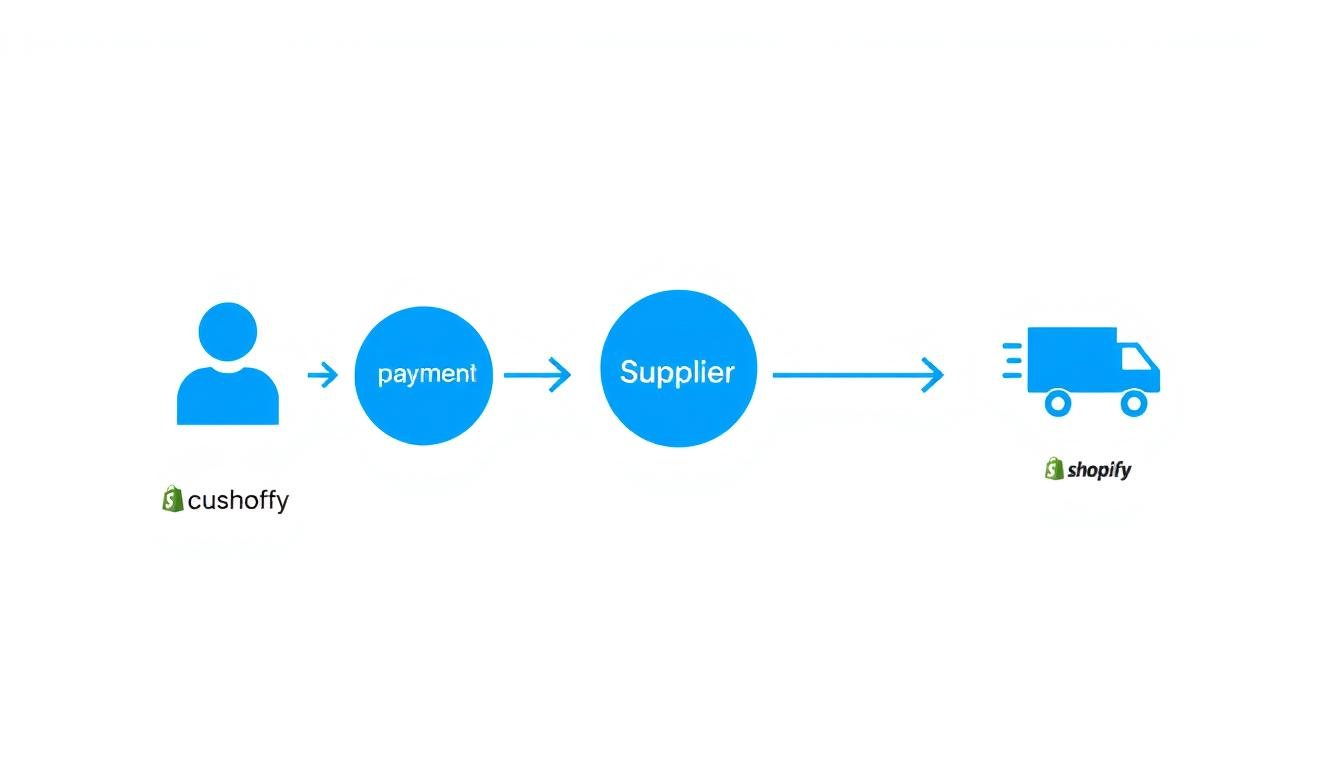Looking to build a profitable online business without inventory headaches? This comprehensive Shopify dropshipping guide walks you through everything you need to know to launch your store in 2025. From setting up your Shopify account to finding winning products, selecting reliable suppliers, and marketing your store effectively—we’ve got you covered with actionable steps and expert insights.
Dropshipping continues to be one of the most accessible business models for entrepreneurs, with global e-commerce sales projected to exceed $6.3 trillion in 2025. With Shopify powering over 4.8 million online stores worldwide, there’s never been a better time to start your dropshipping journey.
Contents
- 1 What is Shopify Dropshipping?
- 2 How to Start Dropshipping on Shopify: Step-by-Step Guide
- 3 Product Research: Finding Winning Products for Your Shopify Store
- 4 Choosing the Right Dropshipping Suppliers
- 5 Designing Your Shopify Dropshipping Store
- 6 Essential Shopify Apps for Dropshipping Success
- 7 Marketing Your Shopify Dropshipping Store
- 8 Order Fulfillment and Customer Service
- 9 Shopify Dropshipping Launch Checklist
- 10 Overcoming Common Dropshipping Challenges
- 11 Start Your Shopify Dropshipping Business Today
What is Shopify Dropshipping?
Shopify dropshipping combines the power of Shopify’s e-commerce platform with the dropshipping business model. In this setup, you create an online store using Shopify, but you don’t purchase inventory upfront or handle shipping. Instead, when a customer places an order in your store, you forward the order details to your supplier, who ships the product directly to your customer.
This business model eliminates many traditional retail challenges: no inventory management, no warehouse costs, and minimal upfront investment. You focus on building your brand, marketing your products, and providing excellent customer service while your suppliers handle product storage and fulfillment.
Pros and Cons of Shopify Dropshipping
Advantages
- Low startup costs and minimal financial risk
- No inventory management or warehousing
- Location independence—run your business from anywhere
- Easy to test new products without bulk purchasing
- Scalable business model with automation options
- Access to Shopify’s robust app ecosystem
Challenges
- Lower profit margins compared to wholesale
- Limited control over shipping and fulfillment
- Potential supplier inventory issues
- More competition in popular niches
- Customer service challenges with third-party fulfillment
- Building brand loyalty can be more difficult
How to Start Dropshipping on Shopify: Step-by-Step Guide
Starting a Shopify dropshipping business might seem overwhelming at first, but breaking it down into manageable steps makes the process straightforward. Let’s walk through each step to get your store up and running.
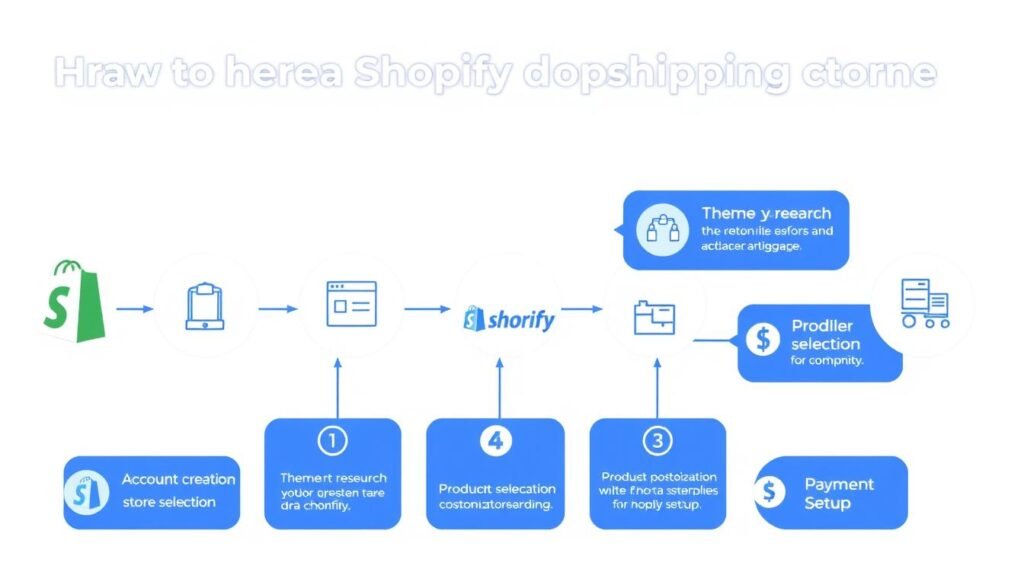
1. Create Your Shopify Account
The first step in your dropshipping journey is setting up your Shopify account. Shopify offers a 14-day free trial, allowing you to explore the platform before committing to a paid plan.
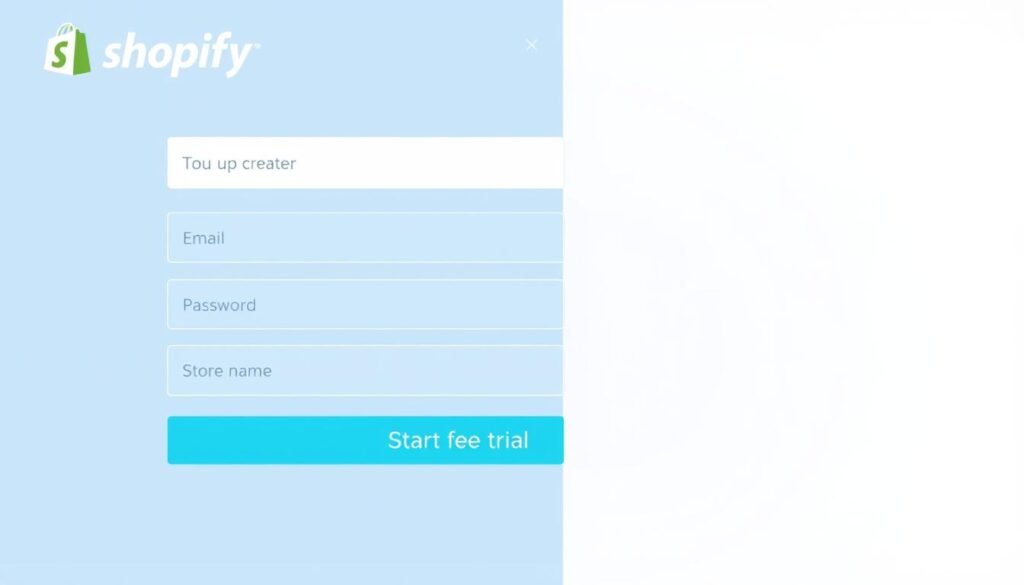
To create your account:
- Visit Shopify.com and click “Start free trial”
- Enter your email address, password, and store name
- Complete the questionnaire about your business goals
- Access your Shopify admin dashboard
After your trial period, Shopify offers several pricing plans to choose from, starting at $29/month for the Basic plan, which includes all the essential features needed for a dropshipping business.
Ready to Start Your Dropshipping Journey?
Create your Shopify store today and explore all the tools you need to build your dropshipping business.
2. Choose and Customize Your Theme
Your store’s appearance plays a crucial role in building trust with customers. Shopify offers a variety of themes, both free and premium, that you can customize to match your brand.
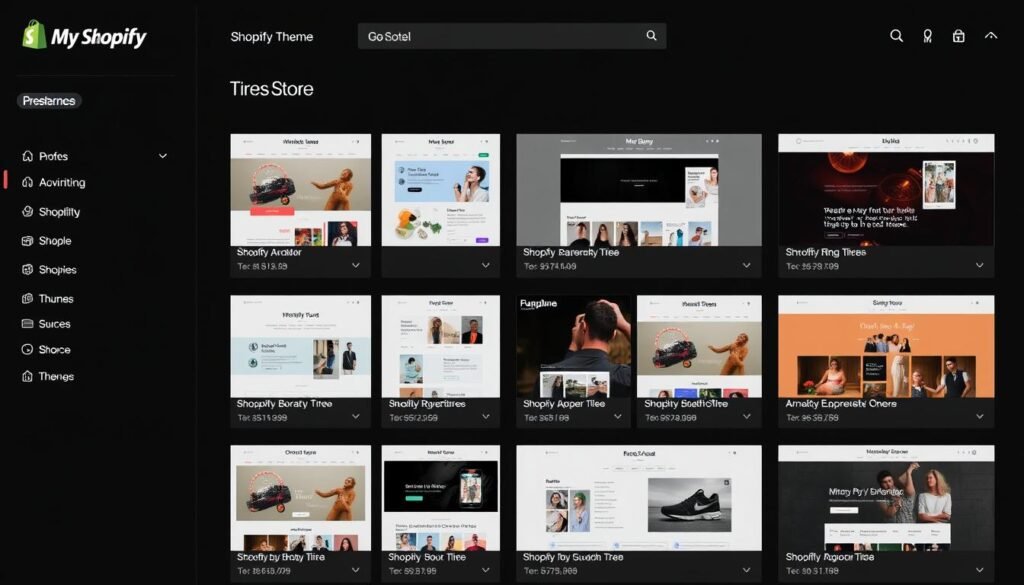
To select and customize your theme:
- From your Shopify admin, go to “Online Store” > “Themes”
- Click “Explore free themes” or “Visit Theme Store” for premium options
- Choose a theme that aligns with your niche and brand aesthetic
- Click “Customize” to modify colors, fonts, and layout
- Add your logo and brand elements
When selecting a theme, prioritize mobile responsiveness, as over 70% of e-commerce traffic now comes from mobile devices. Also, look for themes with built-in features that support dropshipping, such as product variant options and trust badges.
3. Set Up Essential Pages and Store Policies
Before adding products, create the essential pages that build trust with your customers and fulfill legal requirements.
Key pages to create include:
- About Us – Tell your brand story and build connection
- Contact Page – Make it easy for customers to reach you
- Shipping Policy – Detail shipping methods and timeframes
- Return Policy – Explain your return and refund process
- Privacy Policy – Address how you handle customer data
- Terms of Service – Outline the rules for using your store
Shopify provides templates for legal policies that you can customize to match your business practices. Navigate to “Settings” > “Legal” to access and edit these templates.
Product Research: Finding Winning Products for Your Shopify Store
The products you choose to sell can make or break your dropshipping business. Effective product research helps you identify items with high demand, reasonable competition, and good profit margins.
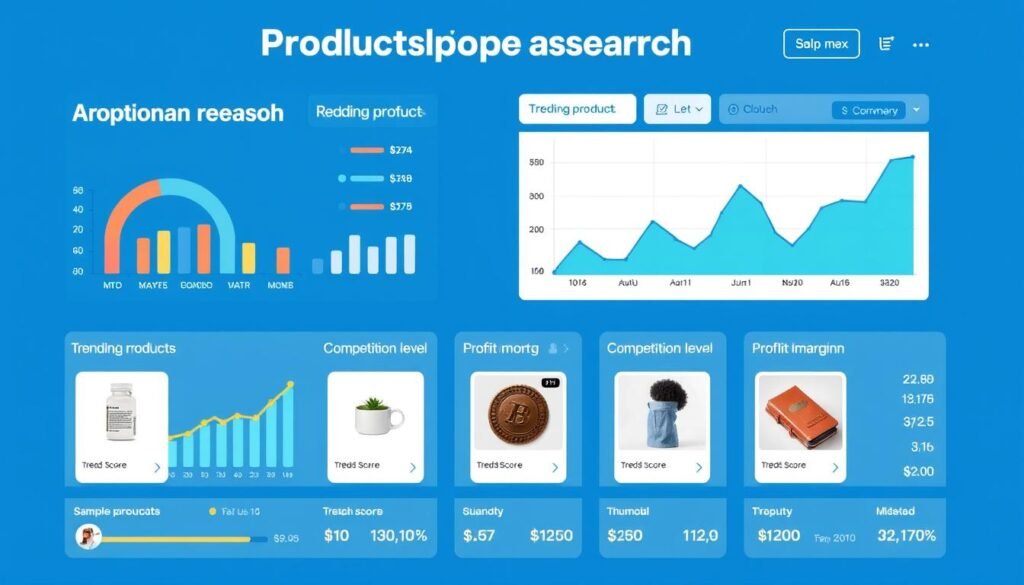
Characteristics of Winning Dropshipping Products
- Solves a problem – Products that address specific pain points sell better
- Has a “wow” factor – Unique or innovative items stand out from competitors
- Not easily found in local stores – Offers something customers can’t get nearby
- Allows for healthy profit margins – Aim for at least 20-30% profit after all costs
- Lightweight and durable – Reduces shipping costs and return rates
- Has consistent demand – Avoid highly seasonal or trendy items unless you plan to rotate inventory
Top Product Research Methods for 2025
Social Media Trend Analysis
Monitor platforms like TikTok, Instagram, and Pinterest for trending products. Use hashtags like #TikTokMadeMeBuyIt, #AmazonFinds, and #FoundItOnAmazon to discover viral products.
Google Trends Analysis
Use Google Trends to analyze search interest over time for potential product ideas. Look for products with steady or increasing interest rather than declining trends.
Competitor Research
Study successful dropshipping stores in your niche. Tools like Similarweb can help you identify top-performing stores and analyze their best-selling products.
Niche Selection Strategy
Rather than trying to sell everything, focus on a specific niche. This approach allows you to target your marketing efforts more effectively and position yourself as an expert in that category.
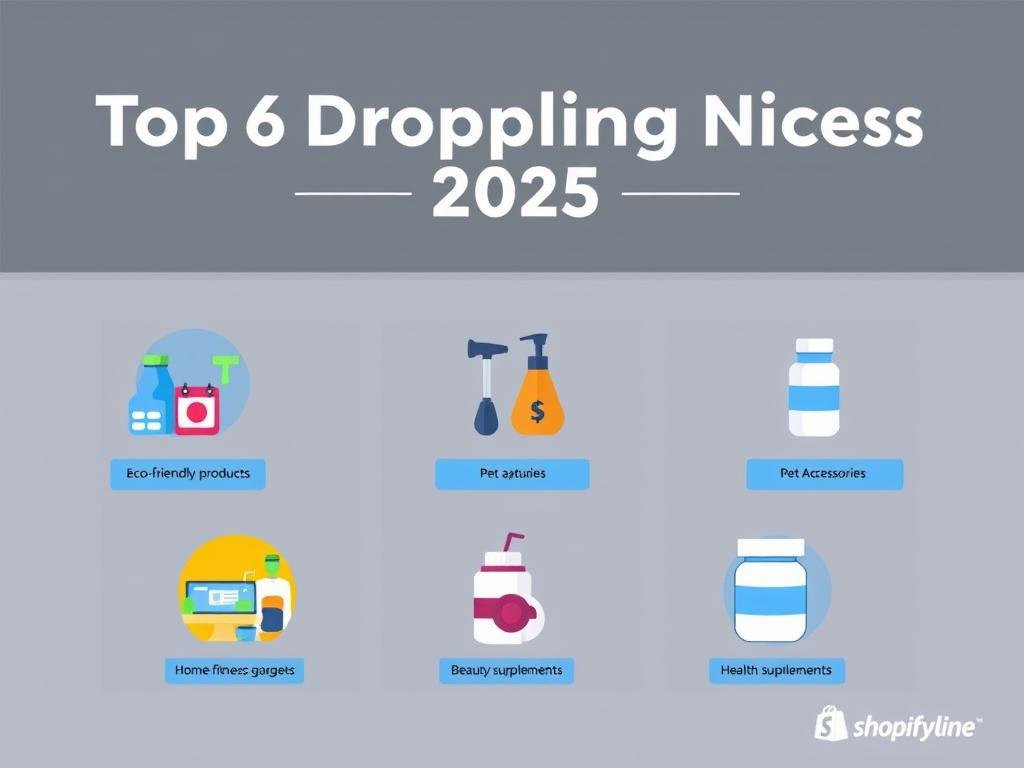
Popular dropshipping niches for 2025 include:
- Eco-friendly products – Sustainable alternatives to everyday items
- Home fitness equipment – Compact exercise tools for home workouts
- Smart home gadgets – Affordable tech that enhances home convenience
- Pet accessories – Innovative products for pet owners
- Beauty and skincare – Unique tools and natural products
- Health supplements – Specialized vitamins and wellness products
When selecting a niche, balance your personal interests with market demand. Passion for your niche will help you create better content and marketing materials, while market demand ensures there are enough potential customers.
Choosing the Right Dropshipping Suppliers
Your suppliers are critical business partners who directly impact your customer satisfaction, shipping times, and product quality. Choosing reliable suppliers is one of the most important decisions you’ll make for your dropshipping business.
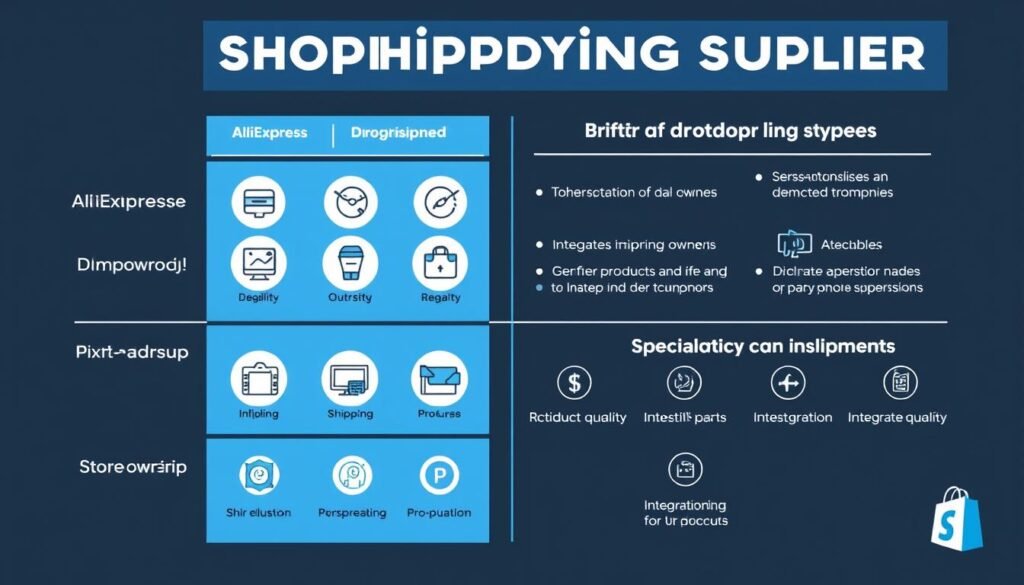
Top Dropshipping Suppliers Comparison
| Supplier | Product Range | Shipping Times | Pricing | Shopify Integration | Best For |
| AliExpress | Extensive (millions of products) | 10-30 days (standard) 7-15 days (ePacket) | Very competitive | Via apps (Oberlo, DSers) | Beginners testing products |
| CJ Dropshipping | Large (thousands of products) | 7-15 days (standard) 3-7 days (expedited) | Moderate | Direct app integration | Scaling businesses |
| Spocket | Curated (US/EU suppliers) | 3-7 days (US/EU customers) | Higher than AliExpress | Direct app integration | Premium stores with US/EU focus |
| Printful | Print-on-demand products | 2-7 days (domestic) 5-15 days (international) | Higher (custom products) | Direct app integration | Custom branded products |
| Shopify Collective | Curated Shopify brands | Varies by supplier (typically faster) | Higher (quality focus) | Native integration | Quality-focused stores |
How to Evaluate Potential Suppliers
Before committing to a supplier, conduct thorough research to ensure they meet your business needs:
- Order samples – Test product quality and shipping times firsthand
- Check reviews – Research supplier ratings and feedback from other dropshippers
- Evaluate communication – Suppliers should respond quickly and professionally
- Verify policies – Understand their handling of returns, damages, and lost packages
- Consider location – Suppliers closer to your target market offer faster shipping
- Assess scalability – Ensure they can handle increased order volume as you grow
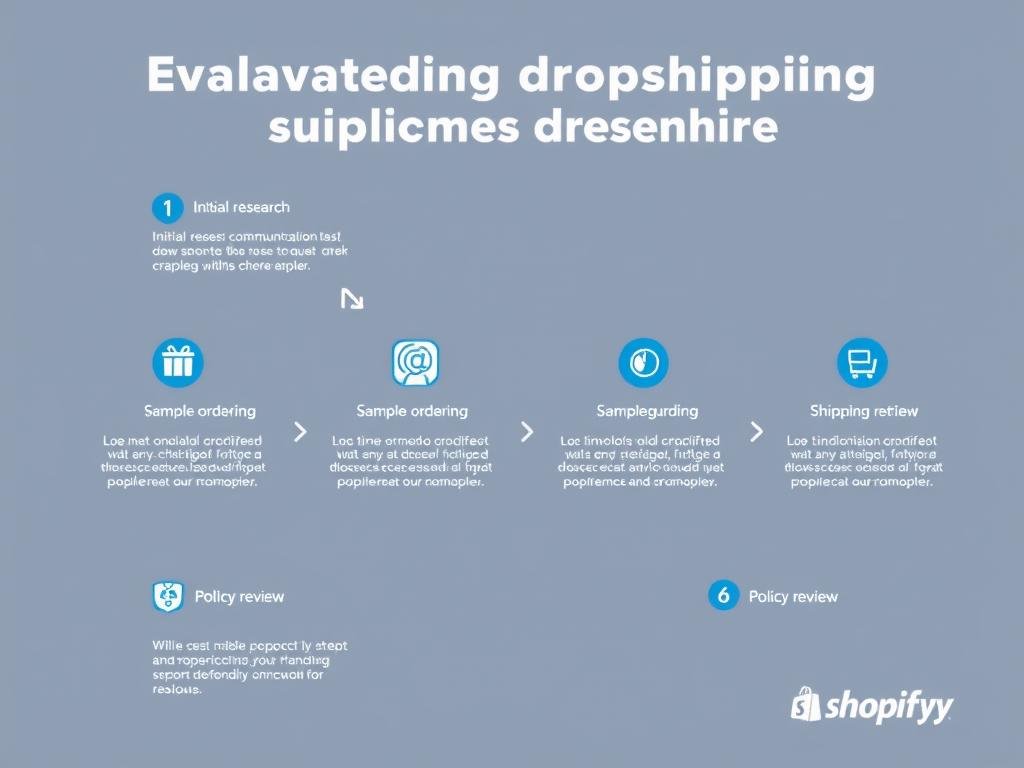
Supplier Integration Options
Once you’ve selected your suppliers, you’ll need to connect them to your Shopify store. There are several ways to integrate suppliers:
Dropshipping Apps
Apps like DSers, Spocket, and CJ Dropshipping connect directly to your Shopify store, allowing you to import products, process orders, and track fulfillment from one dashboard.
Shopify Collective
Shopify’s native dropshipping network connects you with established Shopify brands. Products sync automatically with real-time inventory and pricing updates.
Manual Integration
For suppliers without direct integration, you can manually add products to your store and forward orders. This requires more work but offers flexibility with any supplier.
Designing Your Shopify Dropshipping Store
A professional, user-friendly store design builds trust with potential customers and improves your conversion rate. Let’s explore how to create a store that not only looks great but also drives sales.
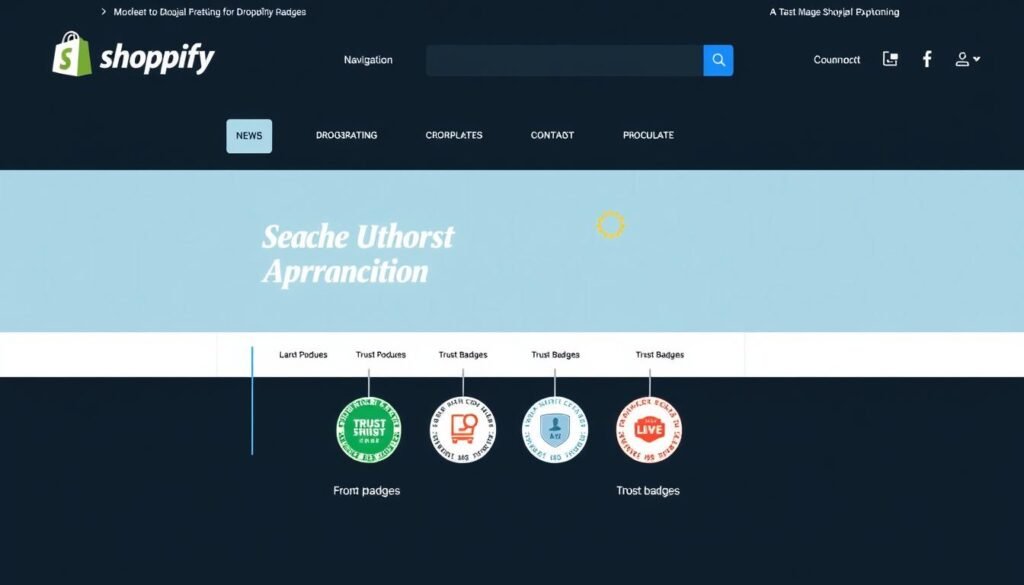
Essential Elements of a High-Converting Store
Homepage Design
- Clear value proposition – Communicate what makes your store unique
- High-quality hero image – Showcase your best products or brand message
- Simple navigation – Help visitors find products easily
- Featured products section – Highlight bestsellers or promotions
- Trust indicators – Display reviews, guarantees, and security badges
Product Page Optimization
- High-resolution images – Show products from multiple angles
- Detailed descriptions – Address features, benefits, and specifications
- Clear pricing – Include any discounts or special offers
- Shipping information – Set realistic expectations about delivery times
- Customer reviews – Build social proof with authentic feedback
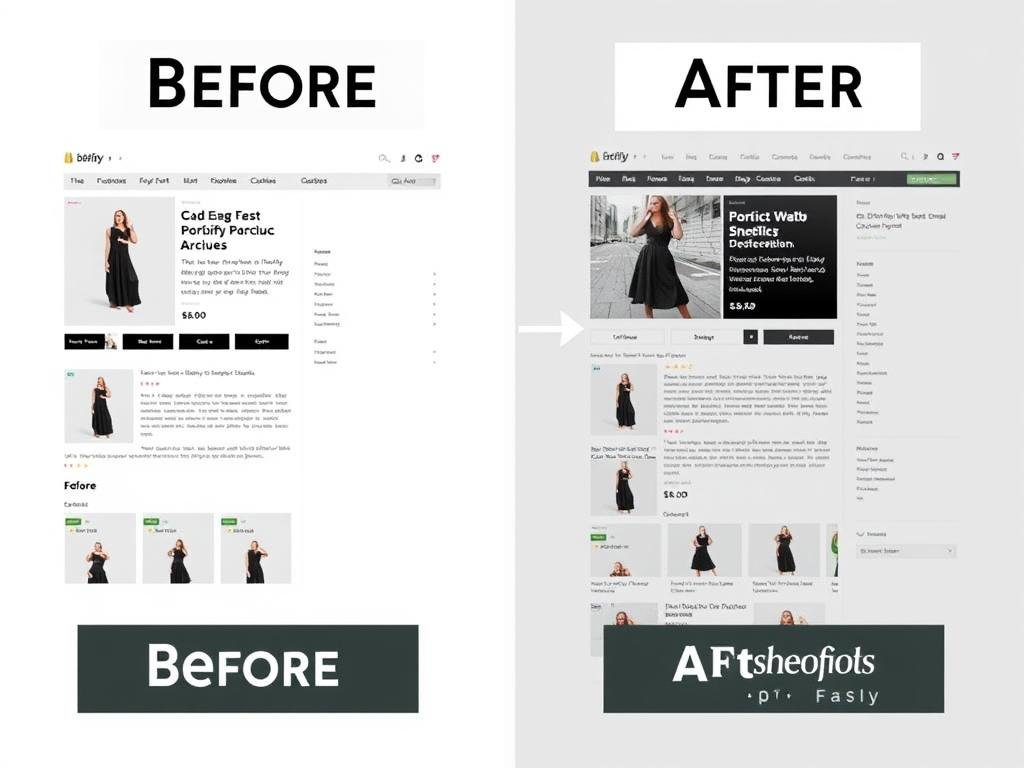
Mobile Optimization
With over 70% of e-commerce traffic coming from mobile devices, ensuring your store looks and functions perfectly on smartphones is essential.
- Test on multiple devices – Verify your store works well on different screen sizes
- Optimize images – Ensure fast loading without sacrificing quality
- Simplify navigation – Make menus easy to use with touch controls
- Enlarge buttons – Make clickable elements large enough for fingertips
- Streamline checkout – Reduce form fields and steps to complete purchase
Step-by-Step Store Customization Guide
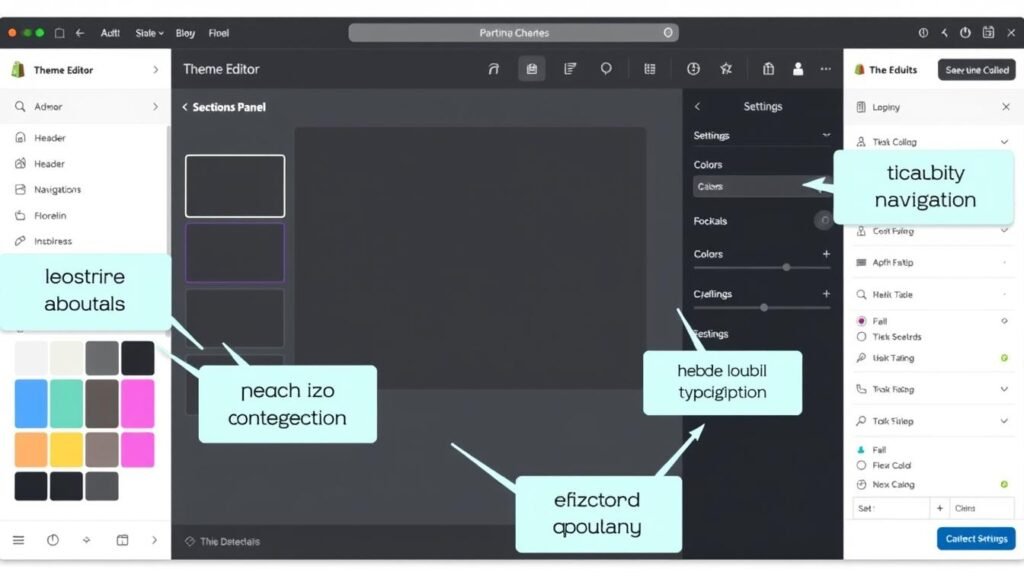
- Access theme editor – From your Shopify admin, go to “Online Store” > “Themes” > “Customize”
- Customize header – Add your logo, adjust navigation menu, and set announcement bar
- Set up homepage sections – Add slideshow, featured collections, and about section
- Adjust typography and colors – Match your brand identity with consistent fonts and color scheme
- Configure product page layout – Organize images, description, and add-to-cart section
- Set up footer – Add important links, newsletter signup, and social media icons
- Add trust elements – Incorporate reviews, guarantees, and security badges
Pro Tip: Don’t overdesign your store. Clean, simple layouts with plenty of white space typically convert better than cluttered designs. Focus on making your products the star of the show.
Essential Shopify Apps for Dropshipping Success
The right apps can significantly enhance your dropshipping operation, automating tasks and adding functionality to your store. Here are the must-have apps for your Shopify dropshipping business in 2025.
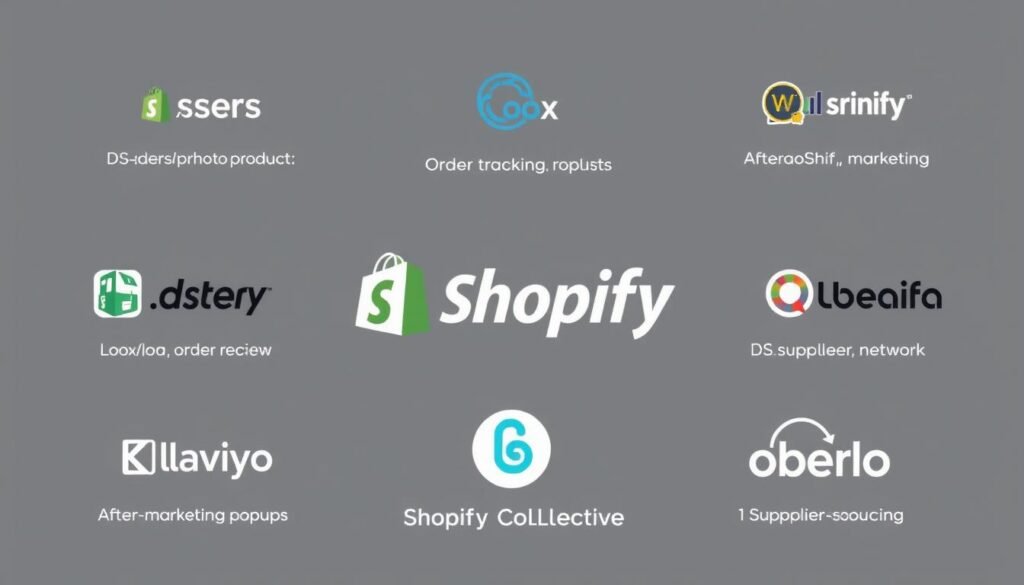
Product Sourcing and Order Fulfillment
DSers - AliExpress Dropshipping
The official replacement for Oberlo, DSers allows you to import products from AliExpress, process orders in bulk, and track fulfillment—all from your Shopify dashboard.
- Bulk order processing (up to 100 orders at once)
- Automatic inventory updates
- Supplier optimization suggestions
- Free plan available with paid upgrades
Spocket - US/EU Dropshipping
Spocket connects you with US and EU suppliers for faster shipping times to Western markets. Perfect for stores focusing on quality and customer experience.
- Curated US/EU supplier network
- Branded invoicing options
- Sample ordering capability
- Free plan with limited products
Printful - Print on Demand
Create custom-designed products without inventory. Printful prints and ships your designs on demand, perfect for building a unique brand.
- No minimum order quantities
- High-quality print products
- White-label packaging
- Free to install, pay per order
Customer Experience and Marketing
AfterShip - Order Tracking
Reduce “where is my order” inquiries by providing customers with automated tracking updates and a branded tracking page.
- Automatic tracking number updates
- Customizable tracking page
- Email and SMS notifications
- Free plan available
Loox - Photo Reviews
Build trust with potential customers by showcasing authentic photo reviews from previous buyers. Automatically request reviews after purchase.
- Photo and video review collection
- Automated review request emails
- Review display widgets
- Paid plans starting at $9.99/month
Klaviyo - Email Marketing
Create targeted email campaigns based on customer behavior. Recover abandoned carts, send welcome sequences, and nurture customer relationships.
- Behavior-based automation
- Segmented customer lists
- Pre-built email templates
- Free plan up to 250 contacts
App Integration Tip: Start with only the essential apps for your business needs. Too many apps can slow down your store and create conflicts. You can always add more as your business grows and your needs evolve.
Marketing Your Shopify Dropshipping Store
Even the best-designed store with amazing products won’t succeed without effective marketing. Let’s explore the most effective strategies to drive traffic and sales to your dropshipping business.

Social Media Advertising
Social media platforms offer powerful targeting capabilities to reach potential customers based on interests, behaviors, and demographics.
Facebook and Instagram Ads
- Start with $10-20 daily budget for testing
- Create lookalike audiences based on your customers
- Use carousel ads to showcase multiple products
- Retarget store visitors who didn’t purchase
- Test different ad creatives to find winners
TikTok Ads
- Create native-looking content that blends with organic posts
- Keep videos short (15-30 seconds)
- Show the product in action with clear benefits
- Use trending sounds to increase engagement
- Partner with TikTok creators for authentic promotion

Google Ads and SEO
While social media targets users based on interests, Google reaches people actively searching for products like yours.
Google Shopping Ads
- Set up Merchant Center and product feed
- Start with automated bidding for beginners
- Optimize product titles with relevant keywords
- Use high-quality images that stand out
- Monitor performance and adjust bids accordingly
Search Engine Optimization (SEO)
- Research keywords for your products and niche
- Optimize product descriptions with relevant terms
- Create blog content addressing customer questions
- Improve site speed for better rankings
- Build backlinks from relevant websites
Email Marketing
Email marketing remains one of the highest ROI channels for e-commerce, with an average return of $42 for every $1 spent.
- Welcome sequence – Introduce new subscribers to your brand
- Abandoned cart recovery – Remind shoppers about items left behind
- Post-purchase follow-up – Ask for reviews and suggest related products
- Re-engagement campaigns – Win back inactive customers
- Promotional emails – Announce sales and new products
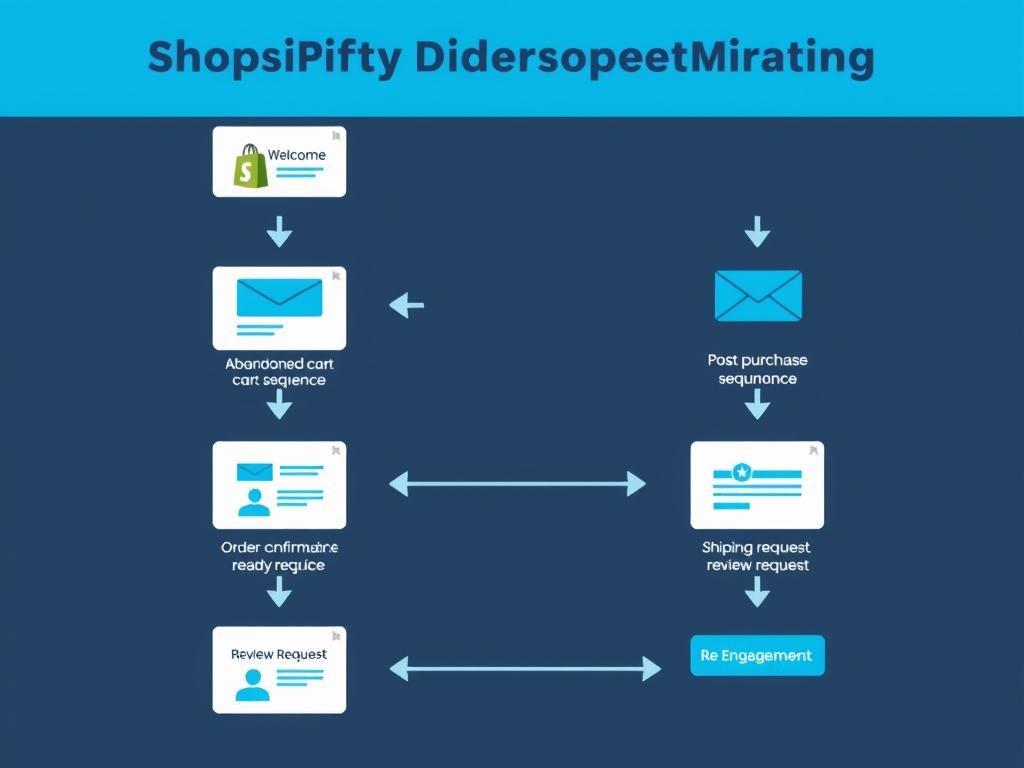
Influencer Marketing
Partnering with influencers can help you reach engaged audiences and build credibility through trusted recommendations.
- Focus on micro-influencers (10K-100K followers) for better engagement rates
- Choose influencers aligned with your niche for relevant audiences
- Offer affiliate commissions instead of flat fees when possible
- Request content rights to reuse influencer content in your marketing
- Track performance with unique discount codes or affiliate links
Marketing Budget Tip: Start with a small budget spread across multiple channels to see what works best for your products. Once you identify the most effective channels, allocate more budget to scale those efforts.
Order Fulfillment and Customer Service
Efficient order processing and excellent customer service are crucial for building a sustainable dropshipping business. Let’s explore how to streamline these processes.

Automating Order Processing
Manual order processing becomes unsustainable as your store grows. Automation tools can save time and reduce errors.
- Use dropshipping apps that automatically forward orders to suppliers
- Set up automatic order status updates to keep customers informed
- Implement tracking number synchronization between suppliers and your store
- Create email templates for common customer communications
- Use chatbots to handle basic customer inquiries
Managing Shipping Expectations
One of the biggest challenges in dropshipping is managing customer expectations around shipping times, especially when using overseas suppliers.
Setting Clear Expectations
- Display shipping times prominently on product pages
- Create a detailed shipping policy page
- Send order confirmation emails with expected delivery dates
- Provide tracking information as soon as available
- Consider offering expedited shipping as a premium option
Reducing Shipping Times
- Work with domestic suppliers when possible
- Use ePacket or expedited shipping for international orders
- Consider suppliers with fulfillment centers in your target markets
- Use services like CJ Dropshipping that consolidate shipping
- Explore Shopify Collective for faster domestic shipping options
Handling Returns and Refunds
A clear returns process is essential for building customer trust and managing potential issues.
- Create a straightforward return policy that balances customer satisfaction with business protection
- Align your policy with supplier capabilities to avoid promising what you can’t deliver
- Consider offering store credit as an alternative to full refunds
- Document return processes with your suppliers before issues arise
- Be proactive with quality issues – offer partial refunds or replacements without requiring returns for minor problems
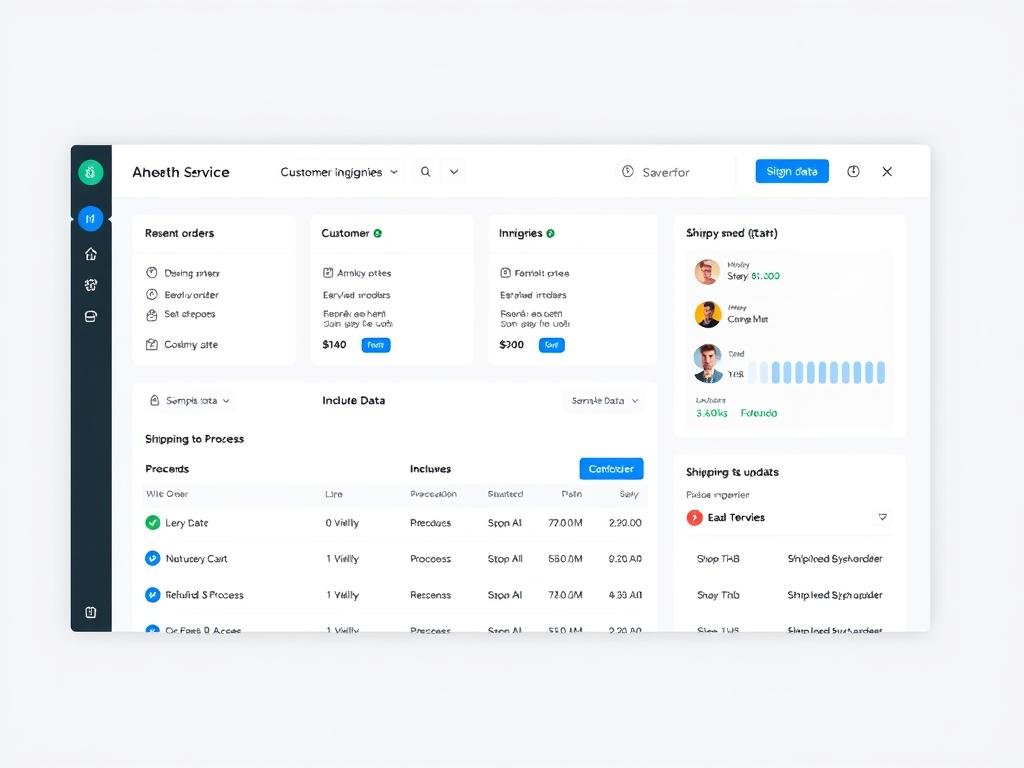
Building Customer Loyalty
Acquiring new customers costs 5-25 times more than retaining existing ones. Implement these strategies to encourage repeat purchases:
- Follow-up emails – Check in after delivery to ensure satisfaction
- Loyalty program – Reward repeat customers with points or discounts
- Personalized recommendations – Suggest products based on purchase history
- Exclusive offers – Provide special discounts to existing customers
- Outstanding support – Resolve issues quickly and exceed expectations
Customer Service Tip: Even though you don’t handle the products directly, you are responsible for the customer experience. Always take ownership of issues and work to resolve them, even if the problem originated with your supplier.
Shopify Dropshipping Launch Checklist
Before launching your store to the public, use this comprehensive checklist to ensure everything is ready for success.

Store Setup and Configuration
- Domain and branding – Purchase domain, create logo, and establish brand colors
- Theme selection and customization – Choose and customize your Shopify theme
- Navigation setup – Create logical menu structure and categories
- Mobile optimization – Test and optimize for mobile devices
Product and Supplier Preparation
- Product selection – Research and choose profitable products
- Supplier verification – Test suppliers with sample orders
- Product importing – Add products to your store with optimized descriptions and images
- Pricing strategy – Set competitive prices with healthy profit margins
Legal and Business Requirements
- Business structure – Decide on business structure (sole proprietorship, LLC, etc.)
- Legal pages – Create privacy policy, terms of service, and return policy
- Tax settings – Configure tax collection based on your location
- Payment processing – Set up payment gateways and test transactions
Marketing and Launch Preparation
- Marketing plan – Create a launch marketing strategy
- Social media setup – Create business accounts on relevant platforms
- Email marketing – Set up welcome sequences and abandoned cart emails
- Analytics installation – Configure Google Analytics and Facebook Pixel
Pre-Launch Testing
- Complete test orders – Place test orders to verify checkout process
- Check all links – Verify all navigation and product links work properly
- Mobile testing – Test functionality on various mobile devices
- Speed optimization – Check and improve page loading times
- Browser compatibility – Test on different browsers (Chrome, Safari, Firefox, Edge)
Ready to Launch Your Dropshipping Business?
Start your Shopify free trial today and turn your dropshipping ideas into reality with the world’s leading e-commerce platform.
Overcoming Common Dropshipping Challenges
While dropshipping offers many advantages, it also comes with unique challenges. Here’s how to address the most common issues dropshippers face.
How do I handle long shipping times?
Long shipping times are one of the biggest challenges in dropshipping, especially when using overseas suppliers. Here’s how to address this issue:
- Be transparent about shipping times on product pages and checkout
- Use suppliers with faster shipping options like ePacket or special lines
- Consider domestic suppliers for your best-selling products
- Offer shipping insurance as an upsell for valuable items
- Send proactive updates about order status to reduce customer inquiries
How do I deal with supplier quality issues?
Product quality inconsistencies can damage your brand reputation. Protect your business with these strategies:
- Order samples before listing products in your store
- Start with a small number of products from proven suppliers
- Build relationships with reliable suppliers
- Create a quality control process with your suppliers
- Have a clear plan for handling customer complaints
How can I compete with other dropshippers?
Standing out in a competitive market requires strategy and differentiation:
- Focus on a specific niche rather than selling everything
- Create a strong brand identity that resonates with your target audience
- Add value through content like guides, tutorials, and product comparisons
- Provide exceptional customer service that larger competitors might not offer
- Consider private labeling or custom packaging to differentiate your products
How do I maintain healthy profit margins?
Maintaining profitability requires careful attention to costs and pricing:
- Calculate all costs including product, shipping, returns, ads, and platform fees
- Implement strategic pricing based on perceived value, not just cost
- Focus on average order value through upsells and cross-sells
- Negotiate with suppliers as your order volume increases
- Monitor and optimize ad spend to improve ROAS (Return on Ad Spend)
Start Your Shopify Dropshipping Business Today
Dropshipping with Shopify offers an accessible path to entrepreneurship with minimal upfront investment. By following this comprehensive guide, you’re now equipped with the knowledge to build a successful online store that can generate income while offering value to customers.
Remember that success in dropshipping doesn’t happen overnight. It requires consistent effort, testing, and optimization. Start small, learn from each step, and gradually scale your business as you identify winning products and marketing strategies.
The e-commerce landscape continues to evolve, but the fundamentals of good business remain the same: offer quality products, provide excellent customer service, and build a brand that resonates with your target audience.
Your Dropshipping Journey Starts Now
Take the first step toward building your online business with Shopify’s 14-day free trial. No credit card required to get started.


